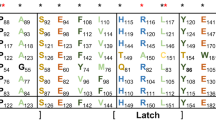Abstract
The parasitic plant species Cuscuta reflexa and Phelipanche aegyptiaca have independently developed parasitism, the former parasitizing on shoots and the latter attaching to roots. Regardless of these differences, the two species use similar organs, termed haustoria, to attach to the host plant. In this study, we show that this morphological similarity can be extended to the molecular level. An attAGP-promoter from Solanum lycopersicum, which is activated by Cuscuta infections, was also induced after infection by P. aegyptiaca. Furthermore, we show by validation of transcriptome sequencing data that the Phelipanche orthologue of a haustorium-specific Cuscuta gene, which codes for a cysteine proteinase, was activated in the early stages of Phelipanche invasion. Inhibition of the Phelipanche cysteine proteinase was achieved by 35S- or attAGP-promoter-driven expression of its intrinsic inhibitory polypeptide. A reduction in P. aegyptiaca infection rates during experiments in flower pots and in an in vitro polybag system in comparison to controls was recorded.






Similar content being viewed by others
Abbreviations
- AGP:
-
Arabinogalactan protein
- attAGP:
-
Attchment AGP
- GUS:
-
ß-Glucuronidase
- PPGP:
-
Parasitic Plant Genome Project
References
Albert M, Belastegui-Macadam X, Kaldenhoff R (2006) An attack of the plant parasite Cuscuta reflexa induces the expression of attAGP, an attachment protein of the host tomato. Plant J 48:548–556
Albert M, Van Der Krol S, Kaldenhoff R (2010) Cuscuta reflexa invasion induces Ca2+ release in its host. Plant Biol 12:554–557
Altschul SF, Madden TL, Schäffer AA, Zhang J, Zhang Z, Miller W, Lipman DJ (1997) Gapped BLAST and PSI-BLAST: a new generation of protein database search programs. Nucl Acids Res 25:3389–3402
Barkman T, McNeal J, Lim S-H, Coat G, Croom H, Young N, dePamphilis C (2007) Mitochondrial DNA suggests at least 11 origins of parasitism in angiosperms and reveals genomic chimerism in parasitic plants. BMC Evol Biol 7:248
Blankenberg D, Kuster GV, Coraor N, Ananda G, Lazarus R, Mangan M, Nekrutenko A, Taylor J (2010) Galaxy: a web based genome analysis tool for experimentalists. Curr Protoc Mol Biol Suppl. 89. doi:10.1002/0471142727.mb1910s89
Bleischwitz M, Albert M, Fuchsbauer HL, Kaldenhoff R (2010) Significance of Cuscutain, a cysteine protease from Cuscuta reflexa, in host–parasite interactions. BMC Plant Biol 10:227
Brand L, Hörler M, Nüesch E, Vassalli S, Barrell P, Yang W, Jefferson R, Grossniklaus U, Curtis M (2006) A versatile and reliable two-component system for tissue-specific gene induction in Arabidopsis. Plant Physiol 141:1194–1204
Gasteiger E, Gattiker A, Hoogland C, Ivanyi I, Appel RD, Bairoch A (2003) ExPASy: the proteomics server for in-depth protein knowledge and analysis. Nucl Acids Res 31:3784–3788
Grabherr MG, Haas BJ, Yassour M, Levin JZ, Thompson DA, Amit I, Adiconis X, Fan L, Raychowdhury R, Zeng Q, Chen Z, Mauceli E, Hacohen N, Gnirke A, Rhind N, di Palma F, Birren BW, Nusbaum C, Lindblad-Toh K, Friedman N, Regev A (2011) Full-length transcriptome assembly from RNA-Seq data without a reference genome. Nat Biotech 29:644–652
Griffitts AA, Cramer CL, Westwood JH (2004) Host gene expression in response to Egyptian broomrape (Orobanche aegyptiaca). Weed Sci 52:697–703
Hamamouch N, Westwood JH, Banner I, Cramer CL, Gepstein S, Aly R (2005) A peptide from insects protects transgenic tobacco from a parasitic weed. Transgenic Res 14:227–236
Hoagland DR, Arnon DI (1950) The water-culture method for growing plants without soil. Calif Agric Exp Sta Circ 347:1–32
Hofgen R, Willmitzer L (1988) Storage of competent cells for Agrobacterium transformation. Nucl Acids Res 16:9877
Horsch RB, Fry JE, Hoffmann NL, Eichholtz D, Rogers SG, Fraley RT (1985) A simple and general method for transferring genes into plants. Science 227:1229–1231
Johnson R, Narvaez J, An G, Ryan C (1989) Expression of proteinase inhibitors I and II in transgenic tobacco plants: effects on natural defense against Manduca sexta larvae. Proc Natl Acad Sci USA 86:9871–9875
Li H, Durbin R (2009) Fast and accurate short read alignment with Burrows–Wheeler transform. Bioinformatics 25:1754–1760
Li DM, Staehelin C, Zhang YS, Peng SL (2009a) Identification of genes differentially expressed in Mikania micrantha during Cuscuta campestris infection by suppression subtractive hybridization. J Plant Physiol 166:1423–1435
Li H, Handsaker B, Wysoker A, Fennell T, Ruan J, Homer N, Marth G, Abecasis G, Durbin R (2009b) Genome Project Data Processing S. The sequence alignment/map format and SAMtools. Bioinformatics 25:2078–2079
Löffler C, Czygan FC, Proksch P (1999) Role of indole-3-acetic acid in the interaction of the phanerogamic parasite Cuscuta and host plants. Plant Biol 1:613–617
Losner-Goshen D, Portnoy VH, Mayer AM, Joel DM (1998) Pectolytic activity by the haustorium of the parasitic plant Orobanche L. (Orobanchaceae) in host roots. Ann Bot 81:319–326
Mangnus EM, Stommen PLA, Zwanenburg B (1992) A standardized bioassay for evaluation of potential germination stimulants for seeds of parasitic weeds. J Plant Growth Regul 11:91–98
Martin M (2011) Cutadapt removes adapter sequences from high-throughput sequencing reads. EMBnet.journal 171:10–12
Nagar R, Singh M, Sanwal GG (1984) Cell wall degrading enzymes in Cuscuta reflexa and its hosts. J Exp Bot 35:1104–1112
Neurath H (1984) Evolution of proteolytic enzymes. Science 224:350–357
Parker C, Dixon N (1983) The use of polyethylene bags in the culture and study of Striga spp. and other organisms on crop roots. Ann Appl Biol 103:485–488
Swarbreck D, Wilks C, Lamesch P, Berardini TZ, Garcia-Hernandez M, Foerster H, Li D, Meyer T, Muller R, Ploetz L, Radenbaugh A, Singh S, Swing V, Tissier C, Zhang P, Huala E (2007) The Arabidopsis Information Resource (TAIR): gene structure and function annotation. Nucl Acids Res 36:D1009–D1014
Urwin PE, Atkinson HJ, Waller DA, McPherson MJ (1995) Engineered oryzacystatin-expressed in transgenic hairy roots confers resistance to Globodera pallida. Plant J 8:121–131
Wilkins T, Smart L (1996) Isolation of RNA from plant tissue. In: Krieg PA (ed) A laboratory guide to RNA: isolation, analysis, and synthesis. Wiley–Liss, New York, pp 4–7
Author information
Authors and Affiliations
Corresponding author
Rights and permissions
About this article
Cite this article
Rehker, J., Lachnit, M. & Kaldenhoff, R. Molecular convergence of the parasitic plant species Cuscuta reflexa and Phelipanche aegyptiaca . Planta 236, 557–566 (2012). https://doi.org/10.1007/s00425-012-1626-x
Received:
Accepted:
Published:
Issue Date:
DOI: https://doi.org/10.1007/s00425-012-1626-x




